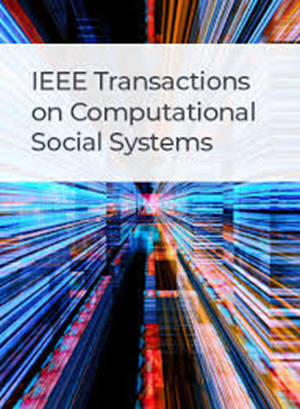具有联合时间和社会关联的多支路关注变压器交通agent轨迹预测
IF 4.5
2区 计算机科学
Q1 COMPUTER SCIENCE, CYBERNETICS
IEEE Transactions on Computational Social Systems
Pub Date : 2024-12-24
DOI:10.1109/TCSS.2024.3517656
引用次数: 0
摘要
准确预测交通参与者的未来轨迹对于自动驾驶汽车和移动机器人等自主无人驾驶系统至关重要。从轨迹数据中提取丰富的时间和社会特征,并有效整合由此产生的特征,对预测模型提出了巨大挑战。为解决这些问题,本文提出了一种新颖的交通代理多分支殷勤变换器(MBAT)轨迹预测网络。具体来说,为了探索和揭示交通参与者的不同相关性,我们提出了一个多分支的解耦时空特征学习模块,以提取时间、空间以及时空特征。这种设计确保了每个分支都能专门针对不同类型的相关性,从而提高了特征的灵活性和表征能力。此外,我们还提出了一种贴心的转换器架构,可同时对历史和未来时间步中可能出现的复杂相关性进行建模。此外,基于不同类型的注意机制,时间、空间和时空特征可以得到有效整合。实证结果表明,我们的模型在公开的 ETH、UCY、SDD 和 INTERACTION 数据集上表现出色。我们还进行了详细的消融研究,以验证模型组件的有效性。本文章由计算机程序翻译,如有差异,请以英文原文为准。
Multibranch Attentive Transformer With Joint Temporal and Social Correlations for Traffic Agents Trajectory Prediction
Accurately predicting the future trajectories of traffic agents is paramount for autonomous unmanned systems, such as self-driving cars and mobile robotics. Extracting abundant temporal and social features from trajectory data and integrating the resulting features effectively pose great challenges for predictive models. To address these issues, this article proposes a novel multibranch attentive transformer (MBAT) trajectory prediction network for traffic agents. Specifically, to explore and reveal diverse correlations of agents, we propose a decoupled temporal and spatial feature learning module with multibranch to extract temporal, spatial, as well as spatiotemporal features. Such design ensures each branch can be specifically tailored for different types of correlations, thus enhancing the flexibility and representation ability of features. Besides, we put forward an attentive transformer architecture that simultaneously models the complex correlations possibly occurring in historical and future timesteps. Moreover, the temporal, spatial, and spatiotemporal features can be effectively integrated based on different types of attention mechanisms. Empirical results demonstrate that our model achieves outstanding performance on public ETH, UCY, SDD, and INTERACTION datasets. Detailed ablation studies are conducted to verify the effectiveness of the model components.
求助全文
通过发布文献求助,成功后即可免费获取论文全文。
去求助
来源期刊

IEEE Transactions on Computational Social Systems
Social Sciences-Social Sciences (miscellaneous)
CiteScore
10.00
自引率
20.00%
发文量
316
期刊介绍:
IEEE Transactions on Computational Social Systems focuses on such topics as modeling, simulation, analysis and understanding of social systems from the quantitative and/or computational perspective. "Systems" include man-man, man-machine and machine-machine organizations and adversarial situations as well as social media structures and their dynamics. More specifically, the proposed transactions publishes articles on modeling the dynamics of social systems, methodologies for incorporating and representing socio-cultural and behavioral aspects in computational modeling, analysis of social system behavior and structure, and paradigms for social systems modeling and simulation. The journal also features articles on social network dynamics, social intelligence and cognition, social systems design and architectures, socio-cultural modeling and representation, and computational behavior modeling, and their applications.
 求助内容:
求助内容: 应助结果提醒方式:
应助结果提醒方式:


